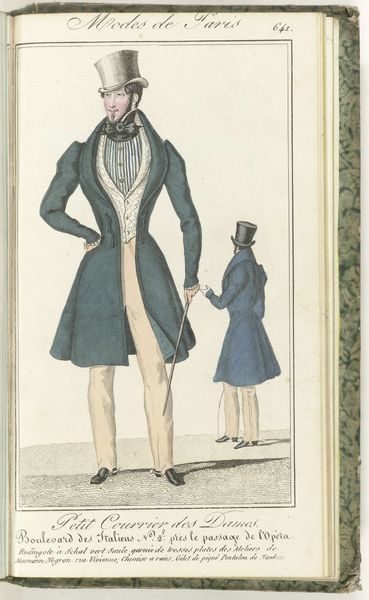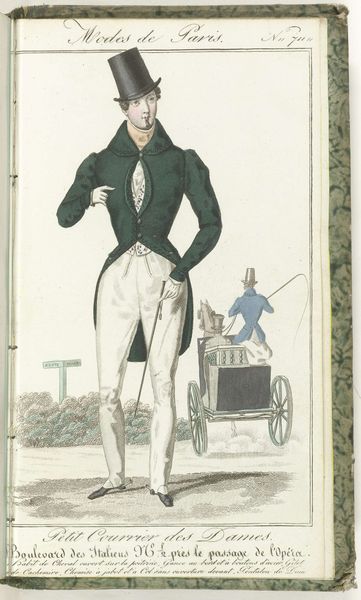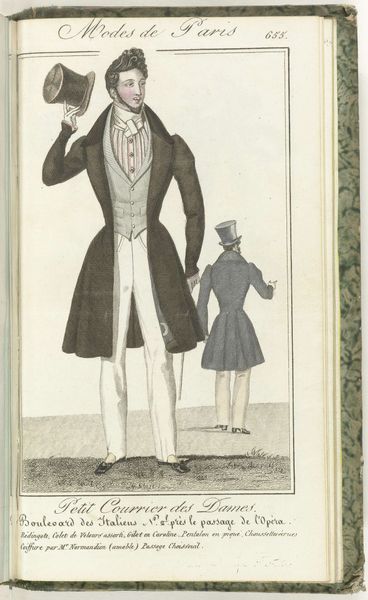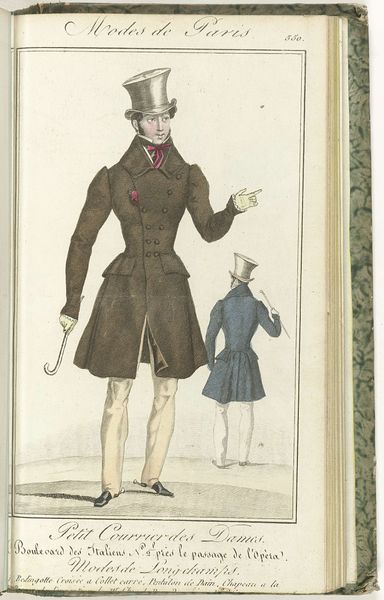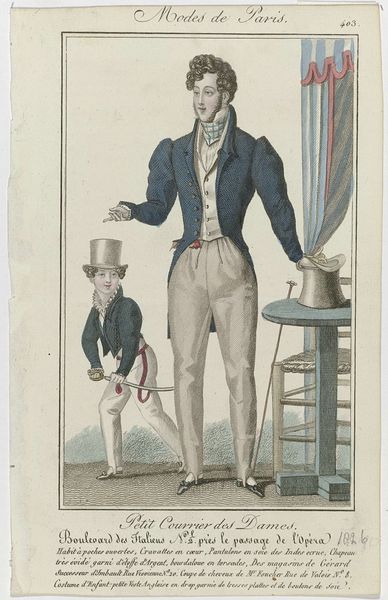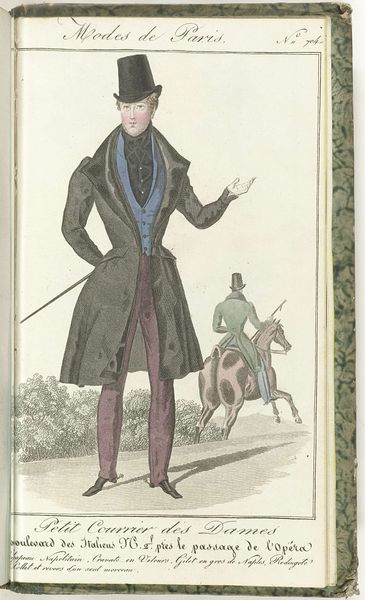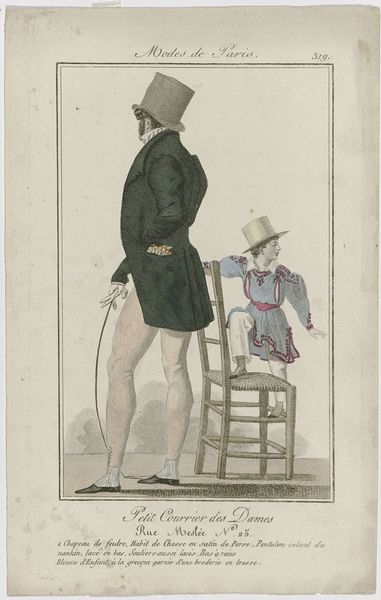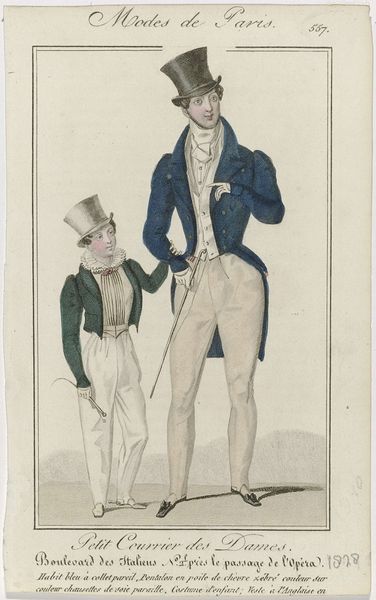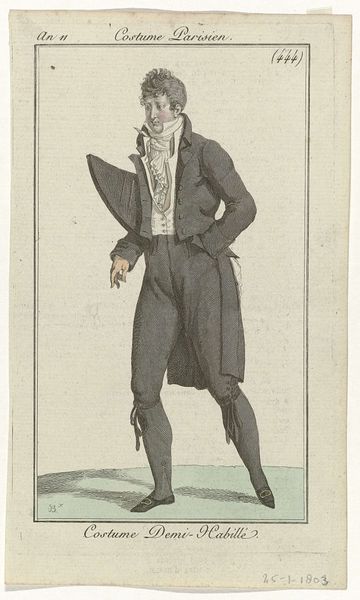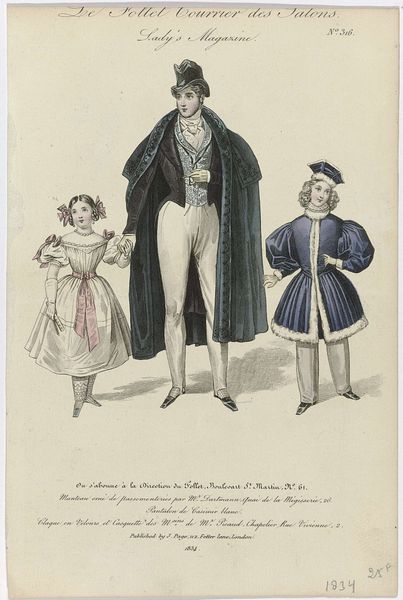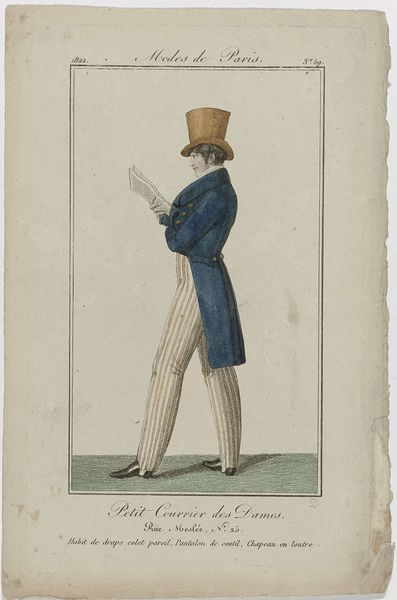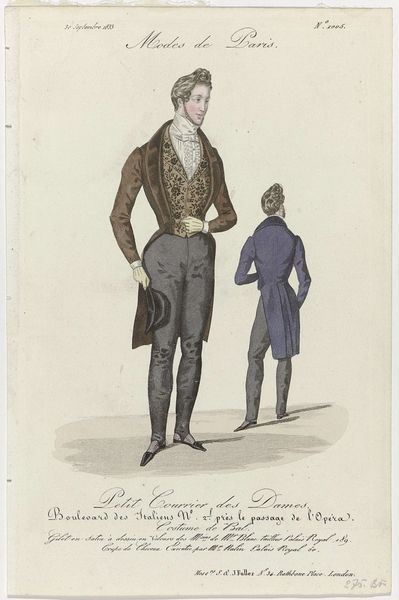
Petit Courrier des Dames, 25 février 1827, No. 452 : Gilet de Cachemire brodé en soie... 1827
0:00
0:00
print, engraving
#
portrait
# print
#
romanticism
#
genre-painting
#
engraving
Dimensions: height 201 mm, width 113 mm
Copyright: Rijks Museum: Open Domain
Curator: Let’s turn our attention to a print currently residing at the Rijksmuseum, titled "Petit Courrier des Dames, 25 février 1827, No. 452 : Gilet de Cachemire brodé en soie...", dating back to 1827. This engraving is an anonymous work, part of the Romanticism movement. Editor: My first thought? He looks...uncomfortable. It’s like someone inflated his shoulders with a bicycle pump. I can’t imagine trying to hail a cab, let alone waltz, in that getup. It's quite exaggerated, right? Curator: Exaggeration is key to understanding the societal function of fashion plates. These weren't just about aesthetics, they were statements about status and class, reflecting and shaping the gendered expectations of the era. The tight waist, the puffed sleeves—they accentuate a certain ideal of masculinity, albeit a highly artificial one. It intersects with Romantic ideals that privileged emotion but controlled outward displays. Editor: True. It's performative. Look at his hand – he’s holding a ridiculously small pair of spectacles as if ready to assess and critique at any moment. What does he have on his pinky nail, some sort of gem or decoration? He's clearly staging a role. Though the scene behind is more relatable with an interior with others present and loose; that offers relief. I feel the scene as a whole is a performance or a staged scene, rather than a natural glimpse into the everyday. Curator: Absolutely, these publications codified codes of visibility that influenced not just clothing but social interactions and artistic representations as well. I also think its worth noting the specific details mentioned, such as the Cachemire vest, because its presence reflects both the global flows of material and luxury as markers of class in 1820s France. Editor: He looks ready to sneeze! Do people long for *this* level of formal dress? Now I need to reconsider the historical burden people face while expressing themselves in clothes. Curator: Precisely! It compels us to think critically about how systems of power manifest even in something as seemingly superficial as fashion, urging dialogue to understand clothing norms both then and now. Editor: Okay, I’m starting to think about the way expectations become an outer burden on people as time wears on... Food for thought. I may wear looser socks today, just in defiance.
Comments
No comments
Be the first to comment and join the conversation on the ultimate creative platform.
